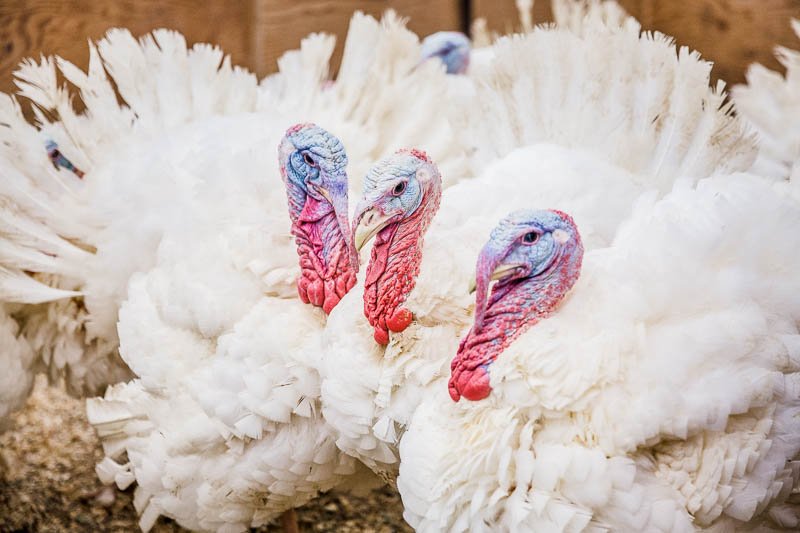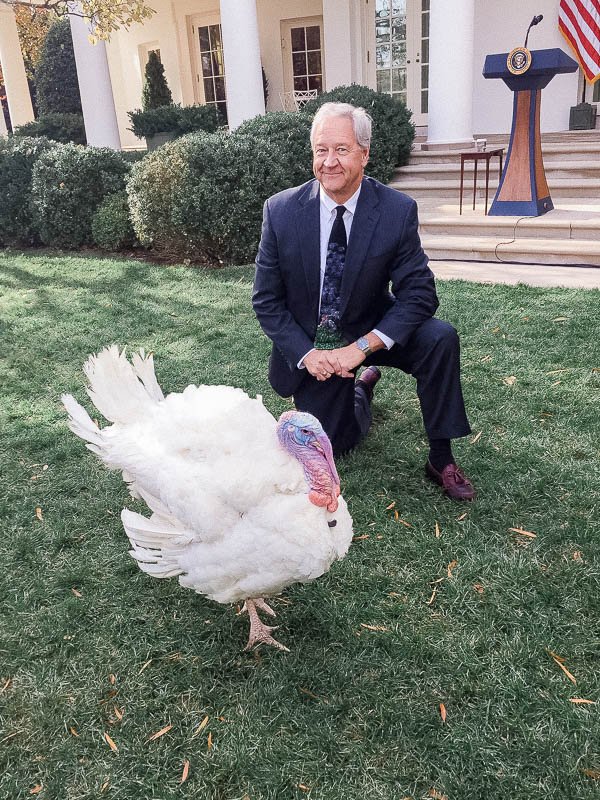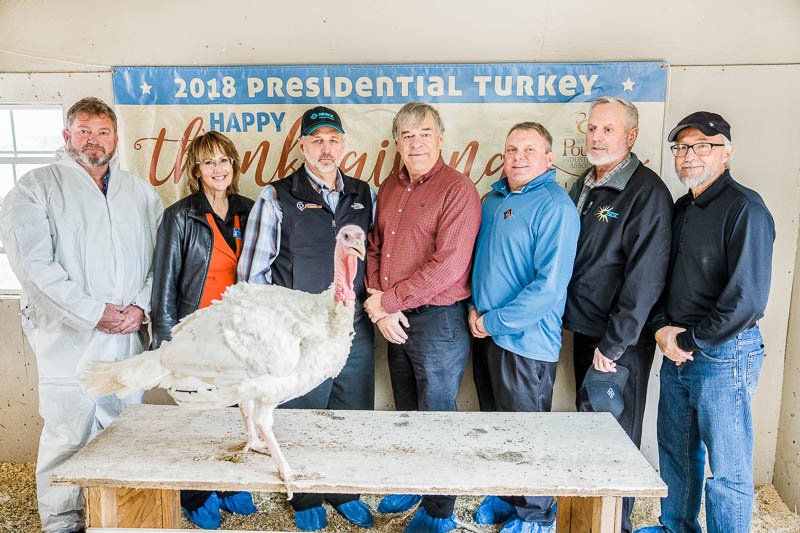The Scoop on South Dakota’s First Presidential Turkey
This Thanksgiving is extra special for South Dakotans. For the first time in history, two South Dakota turkeys will ride – Suburban style – from Huron to Washington, D.C and will be presented to President Trump and his family on behalf of our nation’s turkey farmers.
The National Thanksgiving Turkey Presentation is a tradition that began in 1947 with President Truman and has evolved into a well-coordinated annual effort by the National Turkey Federation (NTF). This year, NTF Chairman Jeff Sveen, who is also chairman of the board for Dakota Provisions, chose a farmer from his home state to raise the presidential flock. He attended last year’s event and enjoyed “babysitting” the turkeys in the Willard Hotel before the ceremony.
“It’s such a fun time for the whole country to come together. It’s an amazing honor for South Dakota turkey farmers,” said Jeff, who was integral to establishing Dakota Provisions and jumpstarting the state’s turkey production”
In honor of these special birds traveling to the nation’s capital from South Dakota, we thought it would be fun to explore how healthy turkeys are raised and what it’s like to be part of the presidential flock.
South Dakota Turkey Stats
Today, there are about 50 turkey farms raising about 5 million turkeys each year. Most of them are located in the eastern part of the state near the Dakota Provisions plant, which processes meat for businesses like Panera Bread, Firehouse Subs and many of the Disney properties.
“About 95 percent of turkeys here are raised in Hutterite colonies, which are very similar to most South Dakota farms,” explained Dr. David Zeman, veterinary pathologist and executive director of the South Dakota Poultry Industries Association. “They’re progressive, employ the latest technology and are family owned.”
Turkey Comfort
The birds grow up in large, well-ventilated barns with open floorplans and plenty of access to food and water. In the summer, the sides of the barns open for fresh air and then close in winter to help keep them toasty warm. The facilities also protect them from predators and diseases.
Eating Healthy
Turkeys are fed a healthy, balanced diet of homegrown crops. According to Dr. Zeman, South Dakota turkeys consume about 3 million bushels of soybeans and 5.4 million bushels of corn each year. That equates to about 30 pounds of soybeans and 60 pounds of corn during the 20 weeks it takes to grow a turkey from a chick to the full-grown weight of roughly 50 pounds.
Thanksgiving Turkeys and Hormones
The turkey slow-roasted in your oven for Thanksgiving is actually different from the birds typically used for deli meat and items at Dakota Provisions. Thanksgiving turkeys are typically 10-20-pound hens (females) instead of 40-50-pound toms (males). Turkeys are so efficient at turning food into protein, the farmers who raise them never use hormones. That means you don’t need to pay extra for the hormone-free claim on the packaging of any poultry item.
The Presidential Flock
So what’s the difference between the turkey you eat and ones raised as part of the presidential flock? Not as much as you may think. They’re fed, sheltered and cared for in many of the same ways.
Two distinct differences are that presidential turkeys live in a small house away from others and are handled regularly so they get used to people and activity. That’s right, the most important quality for a presidential turkey is its ability to keep cool in the spotlight.
According to Jeff, the farmer raising the flock spends a lot of time picking up the birds and training them to stand on tables so they will be comfortable during the press conference and White House ceremony. This hands-on approach helps ensure they’re ready for their close-ups.
So even though presidential turkeys may have more personality, South Dakota farmers know how to raise happy, healthy and nutritious birds for any occasion.
Did you know if you purchase a nationally-branded turkey from the grocery store there’s a chance it’s from a South Dakota farm? That’s because national brands buy from local companies, like Dakota Provisions. Learn more about why eating local may be easier than you think.
Hungry for Truth is an initiative about food and farming funded by the South Dakota soybean checkoff. The goal is to connect South Dakotans with the farmers who grow and raise their food.






